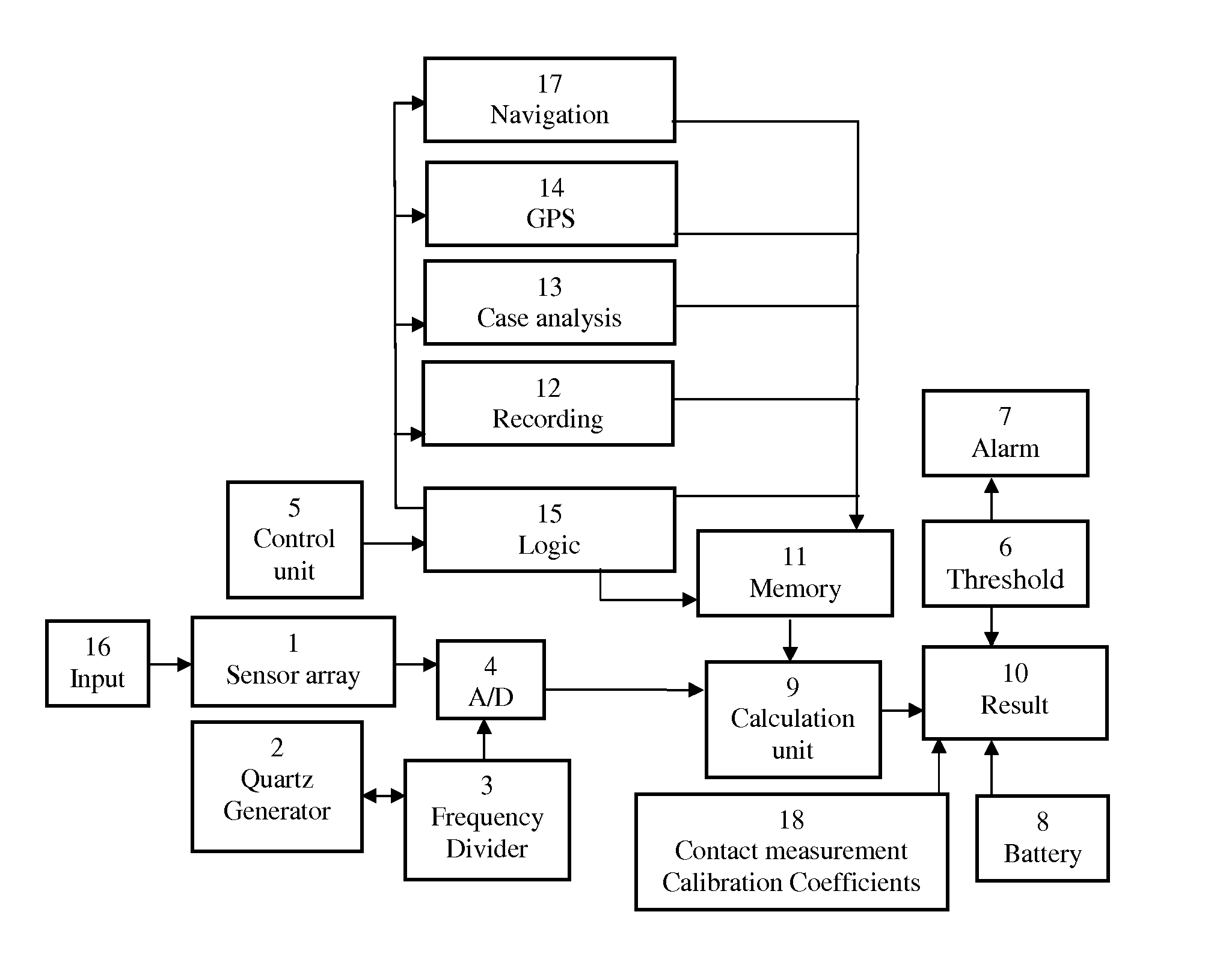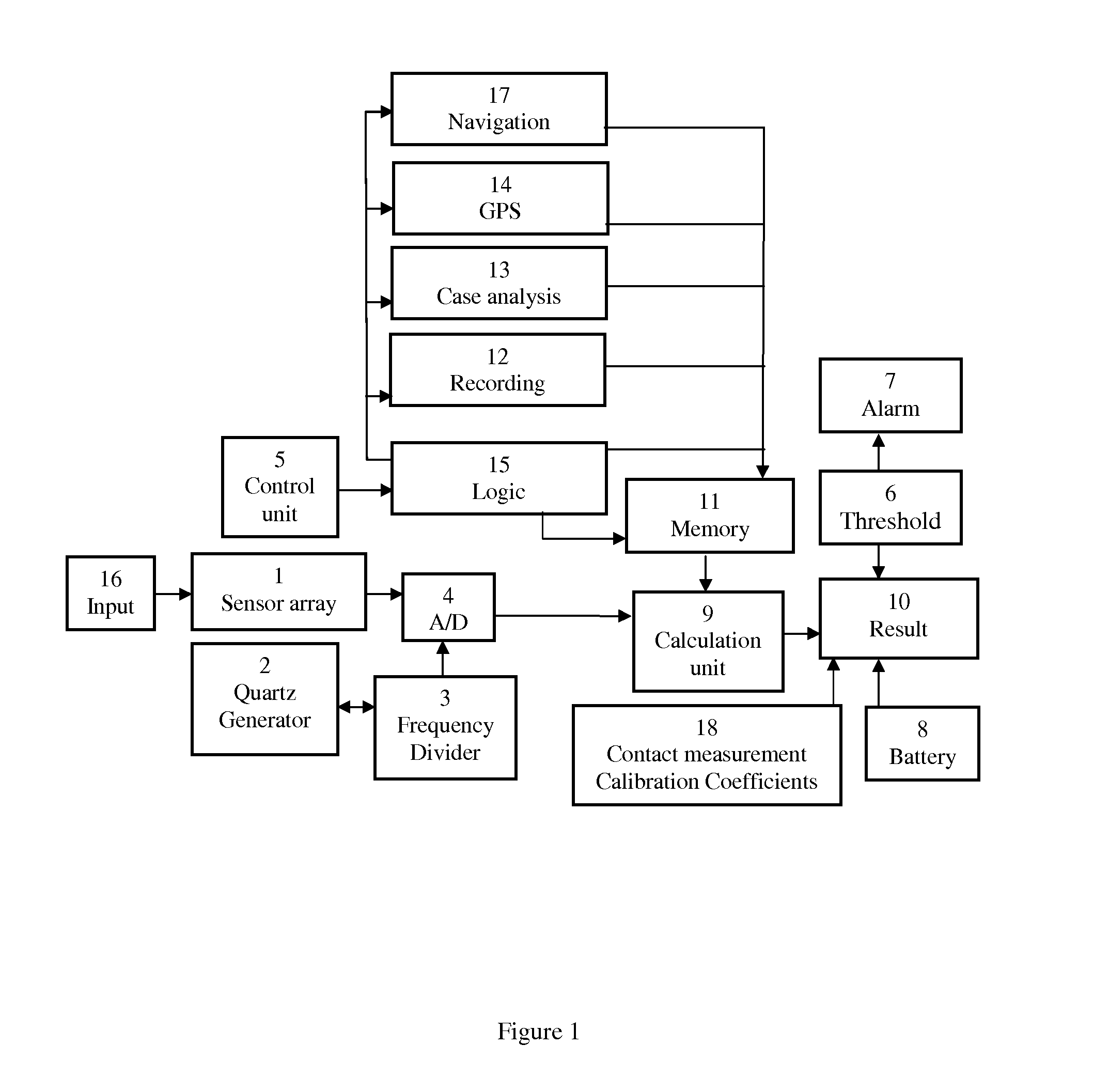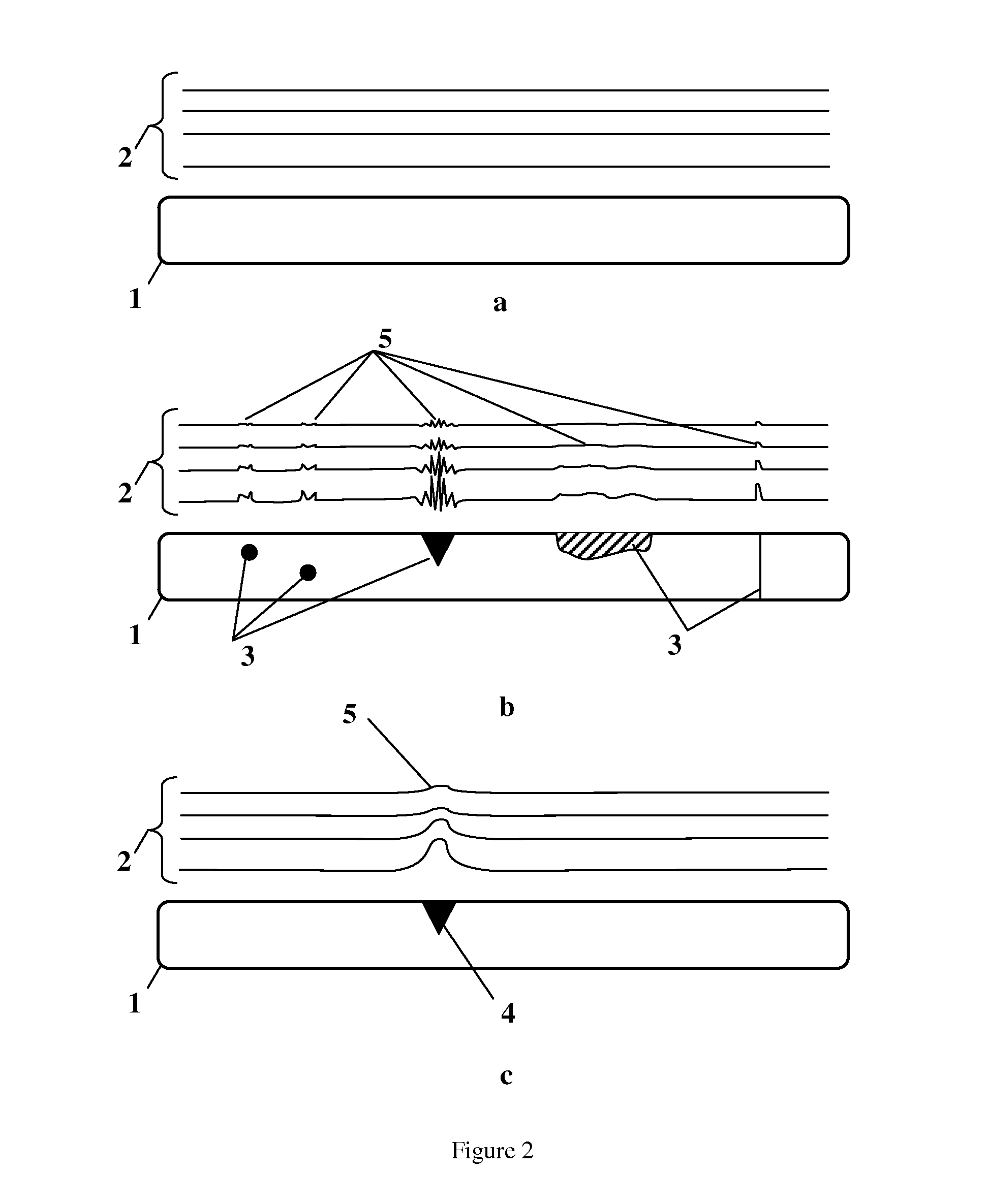Apparatus for the non-contact metallic constructions assessment
- Summary
- Abstract
- Description
- Claims
- Application Information
AI Technical Summary
Benefits of technology
Problems solved by technology
Method used
Image
Examples
Embodiment Construction
[0050]The present invention describes the magnetic tomography (MT) device for magnetographic identification and analysis of mechanical flaws / defects, optimized for extended metallic constructions inspection. The block-diagram of the method is given in FIG. 1.
[0051]The magnetic tomography device is based on using of the inverse magnetostrictive (Villary) effect—i.e. the changing of the material magnetic susceptibility under applied mechanical stress. Generally, such technique uses “natural” magnetization of the ferrous pipes by magnetic field of the Earth.
[0052]The use of MT device has following advantages: 1) Applicable for the unpiggable pipelines or other objects where in-line inspection method is inapplicable; 2) the objects to be inspected include but not limited to: compressor stations pipelines, pipeline inclusions, water-supply pipelines in cities; 3) the use of MT device doesn't require any preparation of the pipeline for testing such as cleaning, opening the pipe, or stoppi...
PUM
 Login to View More
Login to View More Abstract
Description
Claims
Application Information
 Login to View More
Login to View More - R&D
- Intellectual Property
- Life Sciences
- Materials
- Tech Scout
- Unparalleled Data Quality
- Higher Quality Content
- 60% Fewer Hallucinations
Browse by: Latest US Patents, China's latest patents, Technical Efficacy Thesaurus, Application Domain, Technology Topic, Popular Technical Reports.
© 2025 PatSnap. All rights reserved.Legal|Privacy policy|Modern Slavery Act Transparency Statement|Sitemap|About US| Contact US: help@patsnap.com



